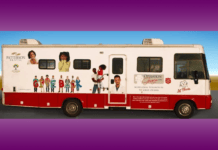Abstract
Students enrolled in dental hygiene programs are required to take a preclinical dental hygiene course prior to delivering dental hygiene therapy to patients. In preclinical dental hygiene, students are introduced to various concepts, with the primary focus being dental hygiene instrumentation. Dental hygiene instrumentation is a fine motor skill that is a requisite for students, yet very challenging and difficult to master. Mastery of dental hygiene instrumentation requires students to receive consistent instruction and feedback from their instructors to reduce the incidence of variance in student learning through faculty calibration. Evidence supports faculty calibration in preclinical dental hygiene because it can (a) promote uniformity in instruction and feedback in the clinical environment; (b) create fairness and transparency in evaluative methods; (c) bolsters the constancy and success in student learning; (d) reinforces the precision required for fine motor learning. Faculty calibration can be very challenging because of time constraints, faculty schedules, differing opinions, and instructor bias; however, the value of faculty calibration to the novice dental hygiene student is instrumental for comprehension and mastership of preclinical dental hygiene concepts.
Keywords: dental hygiene, calibration, dental hygiene instrumentation, dental hygiene therapy
Statement of the Problem
Faculty calibration in preclinical dental hygiene is instrumental in helping students master dental hygiene instrumentation. It also helps to foster a fair and equable learning environment, reduces inconsistencies and promotes uniformity in instruction, offers transparency and conciseness to novice learners, and promotes (Casa, 2015). In the United States, dental hygiene students work with a diverse faculty and have the advantage of being exposed to various teaching methodologies and learning skills that are not found in their text (Dicke, Hodges, Rogo, & Hewett, 2015). Conversely, such diversity creates inconsistencies in instruction in the preclinical environment because dental hygiene faculty members fail to calibrate. Faculty calibration is standardized instruction developed to assess student performance similarly and consistently using (a) consistent theories, (b) evaluative methods, and (c) designated criteria (Casa 2015; Garland & Newell, 2009). Calibration helps to create a fair teaching environment and helps to establish a consistent routine.
While extensive literature addresses calibration in dental education, very little research is available exploring faculty calibration in dental hygiene education (Garland & Newell, 2009). Research is scarce regarding faculty calibration in preclinical dental hygiene courses. Faculty calibration in preclinical dental hygiene is vital for students to achieve clinical competence and is essential to effective teaching and learning (Partido, Jones, English, Nguyen, & Jacks, 2015). This article will explore six concepts taught in preclinical dental hygiene: instrument design and classification, grasp, fulcrum, and adaptation, angulation, and activation, the three As of instrumentation. The significance of faculty calibration, while students are attempting to master these concepts, will be clearly articulated.
Review of Literature
Dental Hygiene Education
Dental hygienists are licensed oral maxillofacial healthcare professionals who provide preventative and therapeutic oral health services to patients (Darby & Walsh, 2015). Dental hygienists must graduate from an accredited dental hygiene program at a college or university and pass a national written examination and a clinical examination in the region they choose to practice (Sanderson, Rachel, & Goldie, 2016). Dental hygienists work in numerous settings including schools, skilled nursing facilities, prisons, hospitals, educational institutions, corporate businesses, and private dental offices (Wilkins, 2017).
Educating future hygienists requires qualified educators with a minimum of a bachelor’s degree to contribute their knowledge and expertise at over 300 accredited dental hygiene programs in the United States (Sanderson et al., 2016). Dental hygiene educators are responsible for teaching students clinical and didactic skills, critical thinking skills, self-assessment strategies, and evidence-based practices. Dental hygiene educators are often hired based merely on their experience as a clinician with little regard to their background in educational methodology. As a result, dental hygiene educators, who do not have any formal guidance in educational methodologies, deliver instruction based on their previous field and educational experiences (Paulis, 2011). It is important to note that many dental hygiene educators may be unaware of the considerable changes in teaching practices and technology from the time they graduate and begin to teach as a clinical instructor (Paulis, 2011).
A benchmark study revealed students enrolled in dental hygiene programs spend the majority of their time with their clinical instructors, who are the first to introduce them to basic instrumentation skill and process-of-care during their treatment of patients (Schönwetter, Lavigne, Mazurat, & Nazarko, 2006). As such, clinical instructors are sought out by students for their expertise and rely on them for support as they matriculate through the dental hygiene curriculum (Kelly, 2007). In the United States, dental hygiene students are in clinic with faculty from very diverse educational, professional, and cultural backgrounds. Dental hygiene students that work with a diverse faculty have the advantage of being exposed to various teaching methodologies and learning skills that are not found in their text (Dicke et al., 2015). Conversely, such diversity creates inconsistencies in instruction in the clinical environment because dental hygiene faculty members fail to calibrate.
Faculty Calibration in Dental Hygiene Education
There has not been much literature published about faculty calibration in dental hygiene education, and although dental hygiene educators are interested in the issue, much of the literature that does exist is greater than five years old (Garland & Newell, 2009). Dicke et al. (2015) reports that while faculty can appreciate the benefits of faculty calibration and want more effort geared towards the topic, in dental hygiene education, more research is required to determine its effectiveness of student learning outcomes.
Santiago, Freudenthal, Peterson, and Bowen (2016) reported that while challenges exist in dental hygiene programs to safeguard a standardized curriculum, methods have been sought to increase reliability when evaluating student performance. In another study, faculty calibration was found to improve rater agreement among dental hygiene faculty members (Partido et al., 2015).
Reportedly, faculty calibration can have negative and positive effects on students learning, so dental hygiene institutions should work towards implementing a faculty calibration program (Casa, 2015). Faculty calibration has been shown to reduce inconsistencies in teaching, improve student satisfaction with learning, and improve learner outcomes (Casa, 2015; Partido et al., 2015; Santiago, 2016).
Preclinical Dental Hygiene
Students enrolled in a dental hygiene program are required to take a preclinical dental hygiene course prior to treating patients. Preclinical dental hygiene introduces students to an array of concepts. The most important of these concepts are instrument design and classification, grasp, fulcrum, and adaptation, angulation, and activation, the three As of instrumentation. Upon graduation, students must be able to provide comprehensive scaling, root planning, and debridement in the oral cavity. This is a skill that can only be accomplished by skillful utilization of dental hygiene instruments. The goal of preclinical dental hygiene is to teach students how to learn these concepts effectively and efficiently. Faculty calibration in preclinical dental hygiene helps to foster a fair and equable learning environment, reduces inconsistencies and promotes uniformity in instruction, and offers transparency and conciseness to novice learners (Casa, 2015).
Instrument Design and Classification
In order for a dental hygienist to select the appropriate instrument for a particular task during dental hygiene therapy, there has to be a thorough understanding of the design features of the periodontal instruments used during therapy. In preclinical dental hygiene, students are taught how to evaluate periodontal instruments by the handle, shank, tip, toe, lateral surfaces, cutting blades, and working end. To a novice student, this can be a very daunting task. There are several hundred periodontal instruments available on the market and designs vary widely among manufacturers. Periodontal instruments are designed to be used in different areas of the mouth, so it is impossible for a clinician to recognize each instrument. However, with a strong foundation in instrument design and classification, clinicians should be able to determine the use of an unfamiliar instrument (Nield-Gehrig, 2013).
Dental hygiene students are required to purchase their own instruments, which are pre-selected for them by one or more faculty members in their program. Instrument selection is specific to each dental hygiene program. Further, upon graduation, dental hygienists develop a preference for certain instruments. The likelihood of clinic faculty being unfamiliar with instruments in their student’s kits is a strong possibility. It is essential to ensure faculty members are calibrated on every instrument in a student’s kit to ensure instructors can (a) consistently explain design features and characteristics with confidence, (b) identify the best use of an instrument, and (c) can use each instrument proficiently.
Grasp
One of the very first concepts taught in preclinical hygiene is instrument grasp. The recommended grasp for holding a periodontal instrument is called a modified pen grasp. This grasp is specialized because it allows for precise control of a periodontal instrument and it affects ergonomics, angulation, adaptation, and stroke activation. Initially, this grasp is difficult to teach because muscle memory has students holding periodontal instruments like a pen (Costley, 2013). With consistent practice, guidance, and faculty observation, students can reprogram the muscle. Precise positioning of the periodontal instrument and finger placement is key to an effective modified pen grasp. Lack of a proper grasp leads to too many variations (Matsuda, 2012). A student’s grasp is influenced by how they are taught initially; it is essential that all clinic faculty understand the fundamentals or the modified pen grasp. Incorporating this concept into faculty calibration should take into careful consideration to yield better benefits to students and ultimately the patients.
Fulcrum
Wilkins (2017) defines a fulcrum as, “the support, or point of rest, on which a lever turns in a moving body.” Fulcrums are needed for stability, control, support, and injury prevention. In preclinical dental hygiene students are taught the ring finger is used as a fulcrum and should be used intraorally. Like the grasp, the fulcrum is the foundation for the three A’s. By the time a student graduates and starts to practice, advanced fulcrums are incorporated into their daily clinical practice hygiene to accomplish more difficult instrumentation techniques. As instructors enter the preclinical courses, they bring skills they are familiar with practicing and inadvertently teach some of these advanced skills to first-year hygiene students (Jacks, 2009). Because the fulcrum allows for precise instrument strokes and acts as the support beam for dental hygiene instrumentation, it is important for faculty to teach students this central concept in a consistent manner. It is equally important for instructors to understand the concept of the fulcrum so that the information can be articulated in a similar fashion to the students.
The Three As: Adaptation, Angulation Activation
Adaptation, angulation, and activation are three core principles to instrumentation. Beginning clinicians do not have an appreciation for these principles because they do not have experience dealing with patients who suffer continuous chronic periodontal infections as a result of residual calculus deposits (Matsuda, 2008).
Adaptation refers to positioning the first 1-2mm of the working ends lateral surface against the tooth (Nield-Gehrig, 2013). Incorrect adaptation can cause trauma to the patient and ineffective deposit removal. Clinicians must be able to maintain the proper adaptation of the periodontal instrument around the entire surface of the tooth. Angulation refers to the relationship of the face of an instrument to the surface where it is applied. This concept is also referred to as the tooth to blade orientation, which is the placement of the blade, the cutting surface, of a periodontal instrument against the tooth surface. Correct angulation prevents tissue trauma to the patient, musculoskeletal disorders for the clinician, and increases the effectiveness of dental hygiene therapy (Matusda, 2008). Activation refers to the movement of the instrument’s cutting edge against the tooth. In order to enact a proper working stroke, pressure must be increased on the fulcrum, the grasp, and against the tooth (Matsuda, 2008; Nield-Gehrig, 2013).
A significant amount of teaching variations exists in preclinical hygiene with adaptation, angulation, and activation (Matsuda, 2008). Because these concepts are the essence of instrumentation, it is essential faculty calibrate when instructing beginning students. Like the modified pen grasp, experienced clinicians perform instrumentation strokes based off of muscle memory and pay very little attention to the intricacies of the three A’s. All three concepts directly correlate to efficiency during the debridement process, which primarily benefits the patient, and secondarily, the clinician.
Conclusion
Calibration in preclinical dental hygiene can promote consistent instruction in the clinical environment. While there is no research to determine the effects of faculty calibration on student learning, Dicke et al. (2015) reported that inconsistent instruction caused (a) frustration and confusion with students, (b) detracted from learning, and (c) decreased student satisfaction. Instructors can have both positive and negative impacts on students, depending on which teaching methods are used in the clinic, so it is important for preclinical dental hygiene instructors to align their teaching practices to achieve student learning objectives and overall program goals (Casa, 2015). The benefits of faculty calibration are invaluable to ensure student success in preclinical hygiene.
References
- Casa, C. (2015). Clinical instructor calibration: Influence and means of approaching uniform teaching practices. Access, 29(1), 14. Retrieved from http://pubs.royle.com/article/CLINICAL_FEATURE/1889167/239849/article.html
- Costley, S. (2013). Mastering apical orientation to the tip. Dimensions of Dental Hygiene, 11(2), 38-39, 43-44.
- Darby, M. & Walsh, M. (2015). Dental Hygiene Theory and Practice, (4th ed.). St. Louis, MO. Elsevier Saunders
- Dicke, N., Hodges, K., Rogo, E., & Hewett, B. (2015.) A survey of clinical faculty calibration in dental hygiene programs. Journal of Dental Hygiene, 89(4), 264-273. Retrieved from http://jdh.adha.org/content/89/4/264.full
- Garland, K.V., & Newell, K.J. (2009). Dental hygiene faculty calibration in the evaluation of calculus detection. Journal of Dental Education, 73(3), 383-9. Retrieved from http://www.jdentaled.org/content/73/3/383.long
- Hauser, A.M., & Bowen, D.M. (2009). Primer on preclinical instruction and evaluation. Journal of Dental Education, 73(3), 390-398. Retrieved from http://www.jdentaled.org/content/73/3/390.full
- Jacks, M. (2009). Moving toward clinical faculty calibration. Access, 23(6), 2. Retrieved from https://www.thefreelibrary.com/Moving+toward+clinical+faculty+calibration.-a0204206431
- Kelly, S. (2007). The exemplary clinical instructor: A qualitative case study. Journal of Physical Therapy Education, 21(1), 63-69.
- Matsuda, S.A. (2008). Anatomy of a stroke: Building the foundation for effective therapy and good ergonomics. Dimensions of Dental Hygiene, 6(11), 22, 24, 26.
- Matsuda, S.A. (2012). The dynamics of pressure. Dimensions of Dental Hygiene, 10(9), 36, 38-39.
- Nield-Gehrig, J.S. & Wilman, D.E. (2013). Patient Assessment Tutorials, 3rd Edition. Baltimore: MD. Lippincott, Williams, and Wilkins.
- Partido, B. B., Jones, A. A., English, D. L., Nguyen, C. A., & Jacks, M. E. (2015). Calculus detection calibration among dental hygiene faculty members utilizing dental endoscopy: A pilot study. Journal of Dental Education, 79(2), 124-132.
- Paulis, M. (2011). Comparison of dental hygiene clinical instructor and student opinions of professional preparation for clinical instruction. Journal of Dental Hygiene, 85(4), 297-305. Retrieved from http://jdh.adha.org/content/85/4/297.full.pdf
- Sanderson, T., Rachel, H., & Goldie, M. (2016). Dental hygiene applications to clinical practice. Philadelphia, PA: F. A. Davis Company.
- Santiago, L.J., Freudenthal, J.J., Peterson, T., & Bowen, D.M. (2016). Dental hygiene faculty calibration using two accepted standards for calculus detection: A pilot study. Journal of Dental Education, 80(8), 975-82.
- Schönwetter, D., Lavigne, S., Mazurat, R., & Nazarko, O. (2006). Students’ perceptions of effective classroom and clinical teaching in dental and dental hygiene education. Journal of Dental Education, 70(6), 624-635.
- Wilkins, E. (2017). Clinical practice of the dental hygienist (12th ed.). Philadelphia, PA: Wolters Kluwer.











